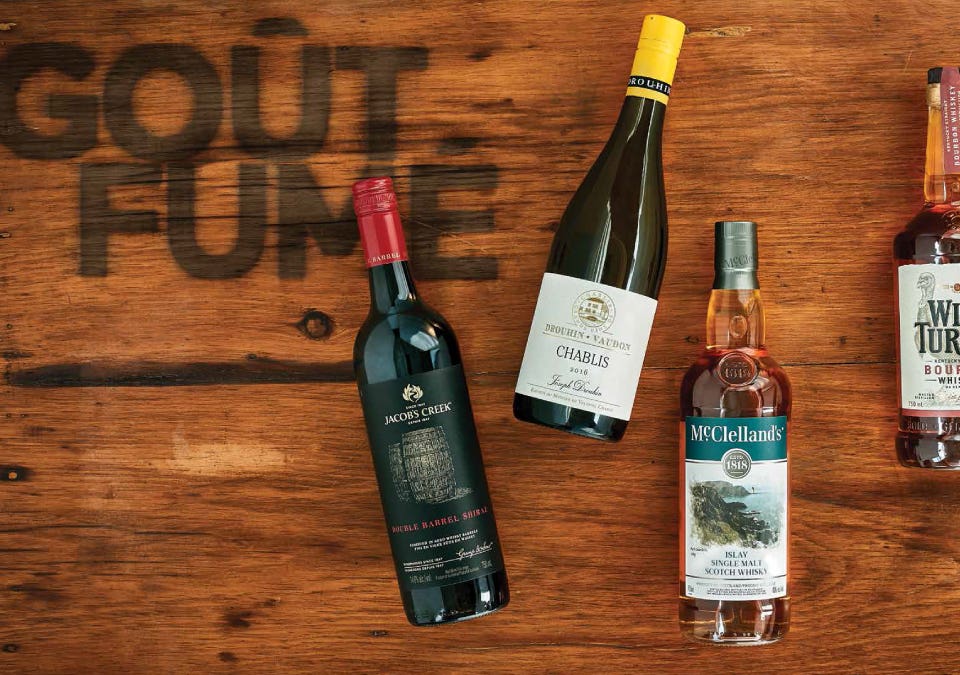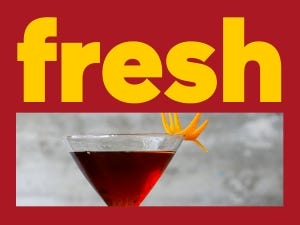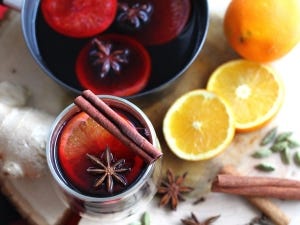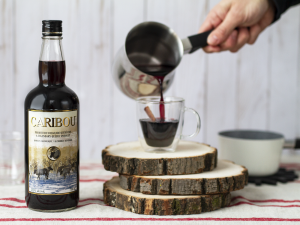The barrel
Often, smoky notes (and sibling grilled, roasted or caramelized flavours) come from the barrels where wines and whiskies are aged. Barrel wood is thoroughly fire-heated when it’s being made, which lends it smokiness that it then passes on to liquids stored in it — be they there for a few months or a few years. Some alcohols even make smokiness a requirement Bourbon must be aged in American White Oak barrels that have been charred, and Old Tom gins also gain smoky notes from their barrel-aging.
La fumée comme ingrédient
Scotches and whiskies earn their smokiness from the drying of wet grains that are then used in malting. In this case, traditionally drying is performed on a peat (or wood) fire, so the smoke directly affects the grain and remains integral to it during the fermentation and distillation processes. Agave used in mescal is also cooked in fire pits over hot embers in order to free up the cactus sugars, whereas tequila agaves are steam cooked. Scandinavian or German beers (such as Rauchbier) also use smoked grains as do many Quebec-based microbreweries inspired by their northern cousins!
Magic or chemistry?
Another possible source of smoky notes in wine can occur during reduction — the chemical reactions that occur in low-oxygen environments (such as in stainless steel tanks). In some Chablis or Rieslings, there are matchstick, gunpowder or flint notes, and similar grilled or smoky accents come from sulphur-based chemical compounds that form during vinification or aging. Some cépages — like Syrah —even have a natural tendency to produce these aromas.


After spending time in a more traditional barrel, this Australian Shiraz is transferred to an aged whisky barrel, which gives it a touch of grilled smokiness.


The Chablis limestone terroir and a vinification process that typically takes place in stainless steel vats lends this Chardonnay reductive notes like flint and a touch of matchstick.


Scotches from Islay, located south-west of the Scottish Highlands, are known for their distinctive and intense character, and are especially known for their peat fire aromas, which marry well with the iodized, marine notes highly typical of the region..


This spirit’s smoky aroma comes from the charred wooden barrels in which it is customary to age bourbon, whereas corn – the primary cereal used in this whisky – lends subtle notes of caramel.
Related posts
-
Read more
For a one-of-a-kind brunch, try our waffle recipes and perfect pairing ideas!
-
Read more
Here are a few of our favourite comfort food dishes and their perfect pairings. Find everything you need for an evening binge watching your favourite shows.
-
Read more
This past year has been a successful one for new low-alcohol products, particularly those made in Quebec, which are gradually earning quite a following. Here’s a look at a continuing trend that shows no signs of slowing down.
 Access to SAQ Inspire personalized services and store inventories are unavailable at the moment.
Access to SAQ Inspire personalized services and store inventories are unavailable at the moment.



















